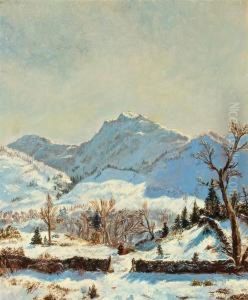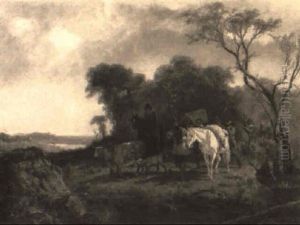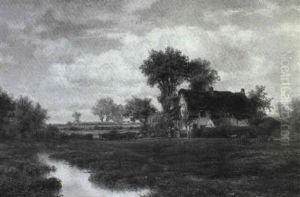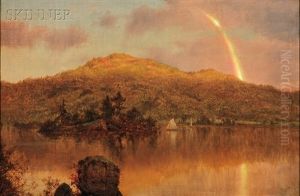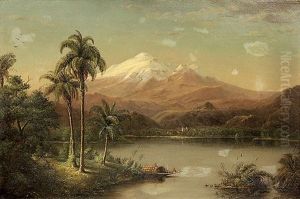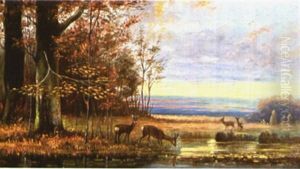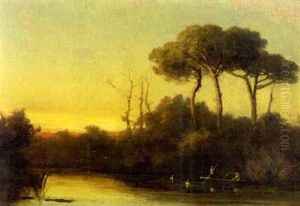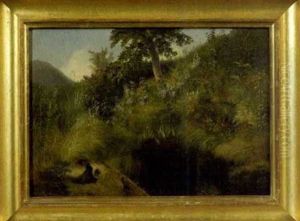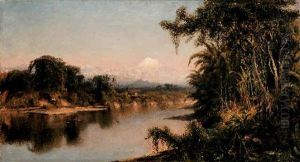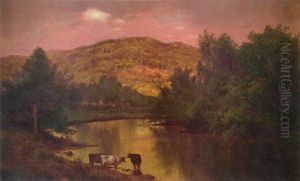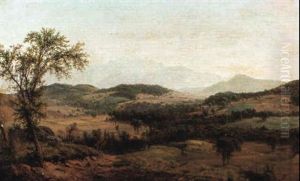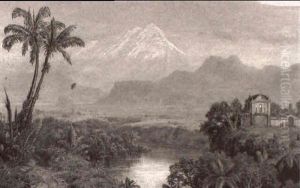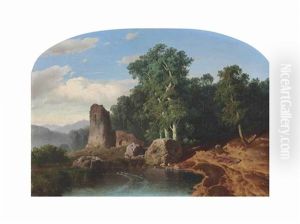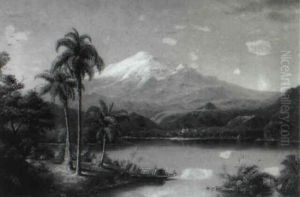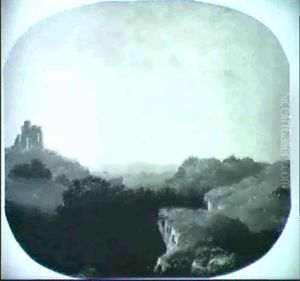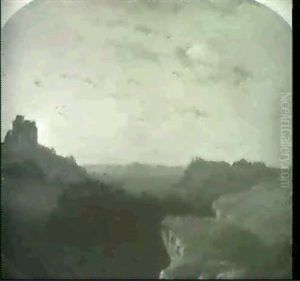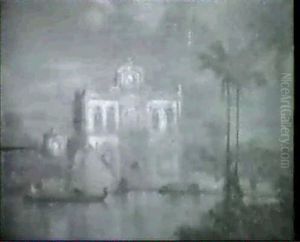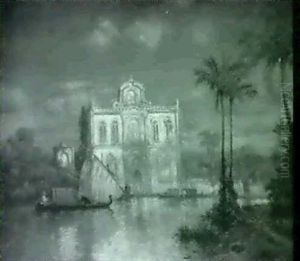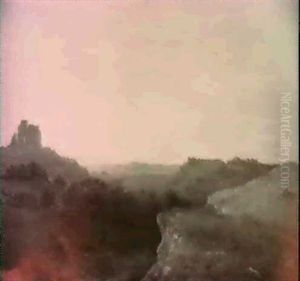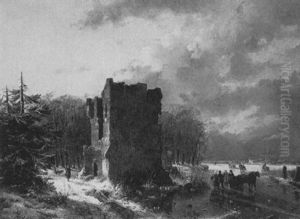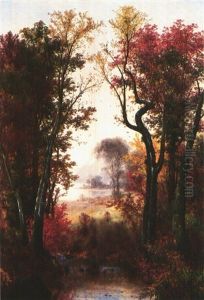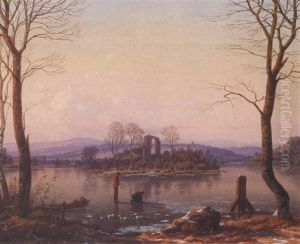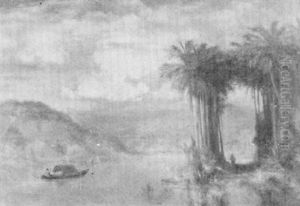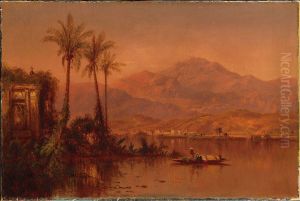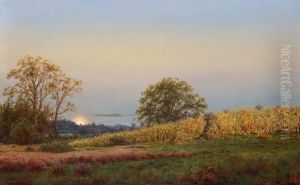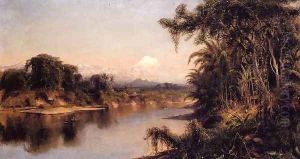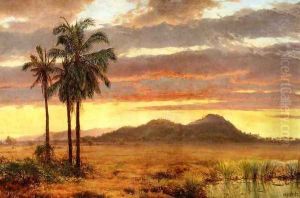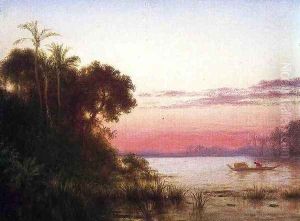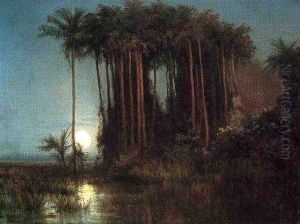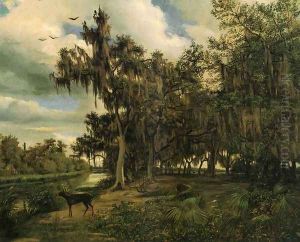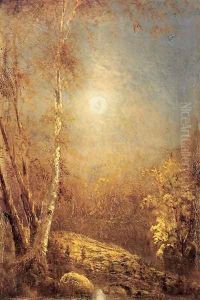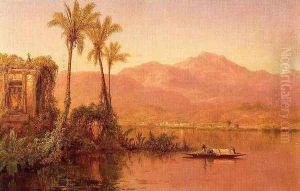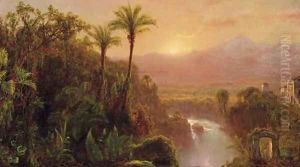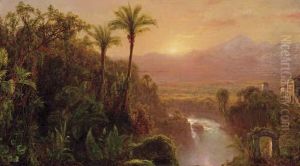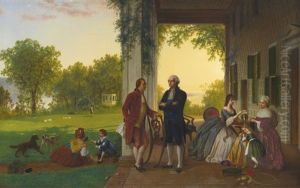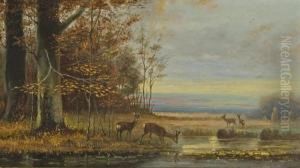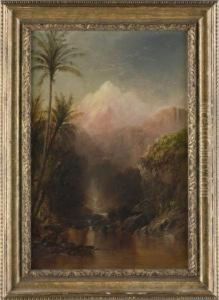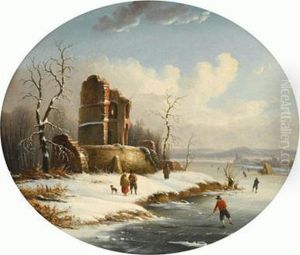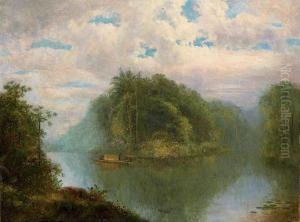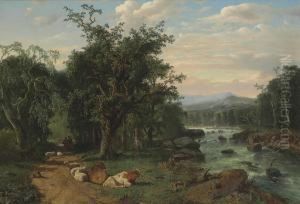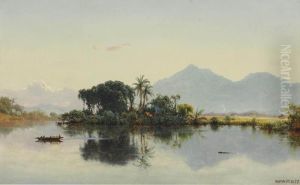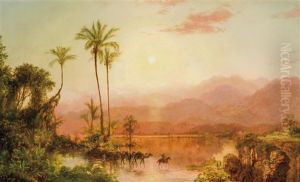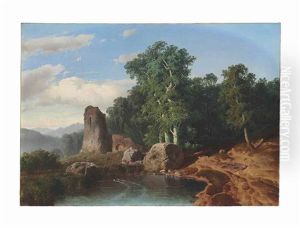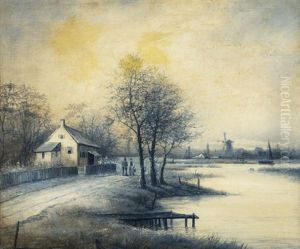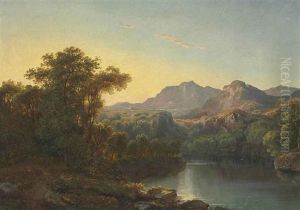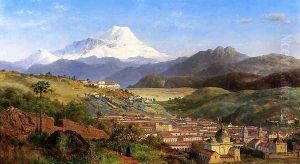Louis Remy Mignot Paintings
Louis Rémy Mignot was a notable American painter known for his landscape works, associated with the Hudson River School. Born on February 3, 1831, in Charleston, South Carolina, Mignot was of French descent and displayed artistic talent at an early age. He studied under the guidance of the German-American artist John Henry Twachtman in New York.
Mignot's work is characterized by his meticulous attention to detail and his use of light, which often imbues his paintings with a serene, almost mystical quality. His landscapes frequently depict the American South and tropics, regions he was deeply attached to, having spent a significant part of his life in these locales.
In 1855, Mignot traveled to Europe to further his artistic training, visiting England and the Netherlands before settling in Paris. There, he was influenced by the works of the French Barbizon School, which emphasized the beauty and simplicity of rural life and landscape. This experience enriched his palette and helped refine his approach to depicting the natural environment.
Despite his growing success, Mignot's career was affected by the American Civil War. His sympathies lay with the Confederacy due to his Southern roots, which made his position in the Northern art world precarious. As the conflict escalated, he left the United States and moved to London, where he continued to work and exhibit his paintings.
Tragically, Louis Rémy Mignot's life was cut short when he died from a smallpox outbreak while in England on September 22, 1870. He was only 39 years old. Mignot's legacy is preserved in his luminous landscapes that capture the unique beauty of the American and tropical terrains. Today, his works are held in high regard and can be found in major museums and private collections.
